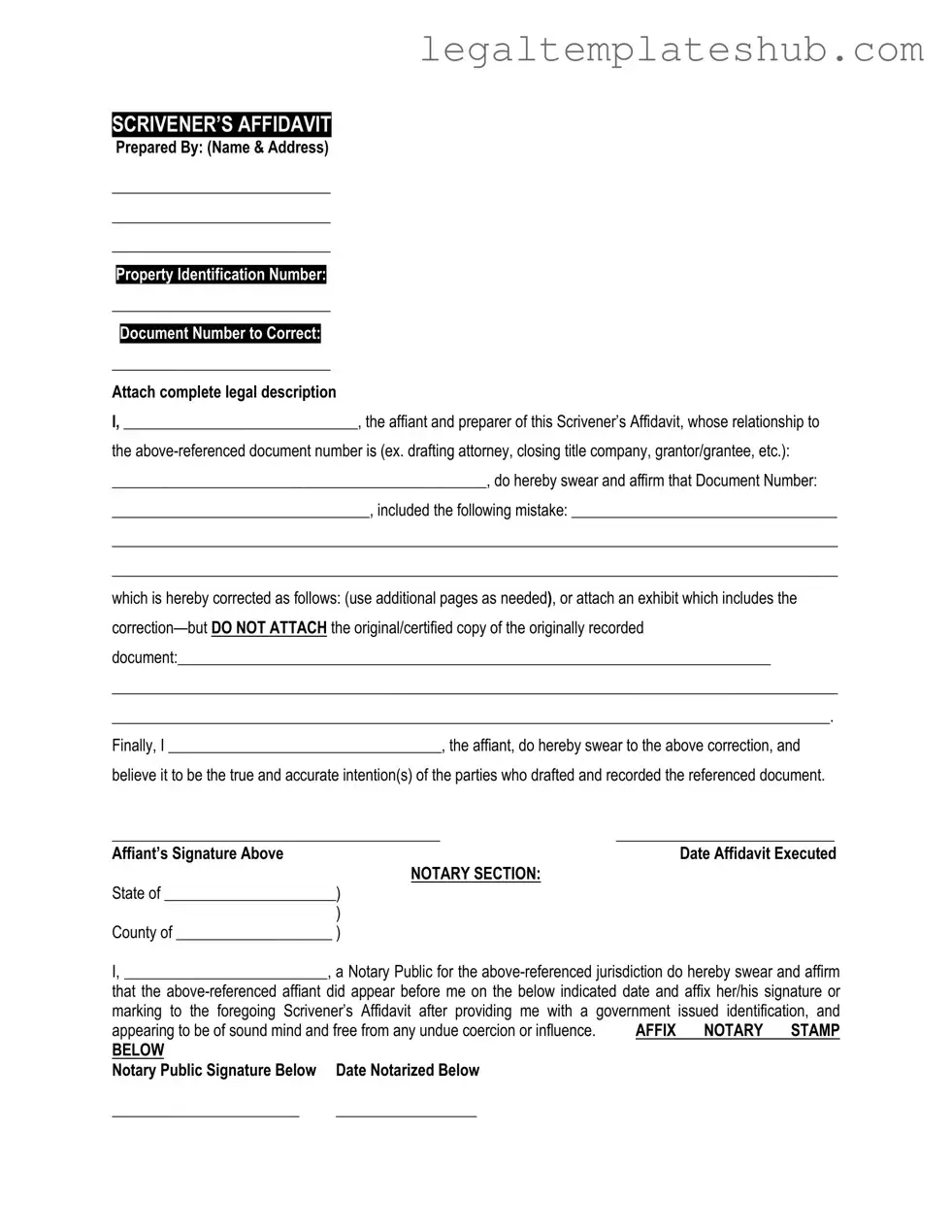Blank Scrivener's Affidavit PDF Form
The Scrivener's Affidavit is a legal document used to correct errors in written instruments or clarify the intent of the original document. It serves as a formal declaration by a scrivener, or someone who prepares legal documents, affirming the accuracy of the information. If you need to fill out this form, click the button below.
Access Editor
